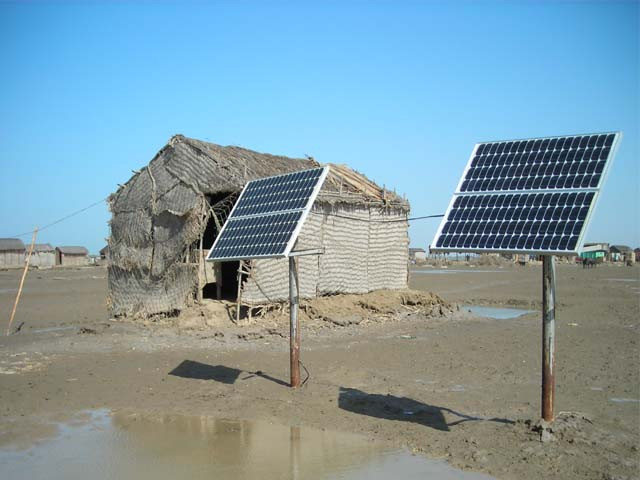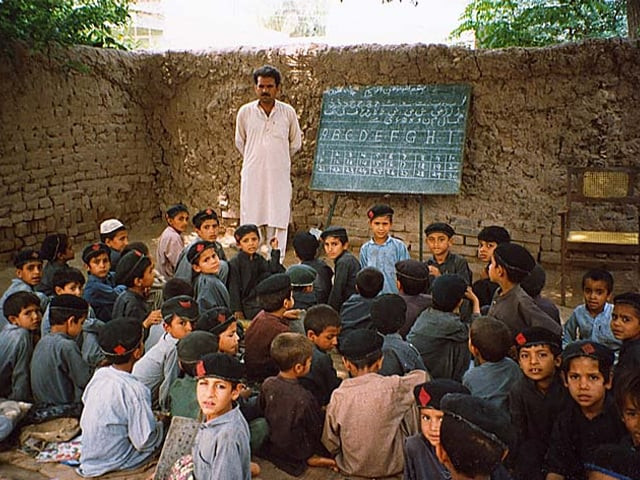Business
Gap stock falls as retailer misses sales expectations, warns tariffs will impact profits

Gap stock fell in extended trading on Thursday after the company warned tariffs will impact its profits moving forward.
When Gap last reported results in May, it said it expected tariffs to cost between $100 million and $150 million on a net basis, but on Thursday, it said those costs are now going to be between $150 million and $175 million.
Its full-year operating margin is expected to be between 6.7% and 7%, down from 7.4% in the previous fiscal year, reflecting a tariff impact between 1 percentage point and 1.10 percentage points.
In its current quarter, its expecting its gross margin to be down between 1.5 and 1.7 percentage points, driven by tariff costs.
Beyond tariffs, the specialty apparel company behind Old Navy, Athleta, Banana Republic and its namesake banner delivered mixed results in its fiscal second quarter. Here’s how Gap performed in the quarter compared with what Wall Street was anticipating, based on a survey of analysts by LSEG:
- Earnings per share: 57 cents vs. 55 cents expected
- Revenue: $3.73 billion vs. $3.74 billion expected
The company’s reported net income for the three-month period that ended Aug. 2 was $216 million, or 57 cents per share, compared with $206 million, or 54 cents per share, a year earlier.
Sales rose to $3.73 billion, up slightly from $3.72 billion a year earlier. Sales came in lower than expected and so did comparable sales. During the quarter, comparable sales rose 1%, weaker than the 1.9% rise that analysts had expected, according to StreetAccount.
While Gap, Banana Republic and Old Navy all saw comparable sales rise during the quarter, Athleta dragged down the company’s overall performance with comps down 9%.
“Clearly, Athleta is a powerful brand in the active space, being the number five brand in the space, but we’re disappointed in the quarter. We have moved away, if you will, from really distinctive performance roots,” CEO Richard Dickson told CNBC in an interview. “We’ve paid a lot of attention, trying to court a new customer, and ultimately didn’t have enough offerings for our core customer. As we balance that out, we’ve been very transparent to say it’s a year of reset for us.”
Last month, Gap announced that Maggie Gauger, a longtime veteran of Nike, had been tapped as Athleta’s next CEO — the third top executive hired to helm the brand in the last two years.
The company reaffirmed its fiscal 2025 net sales growth outlook and is continuing to expect revenue to grow between 1% and 2%, in line with estimates of 1.6%, according to LSEG. For the current quarter, Gap is expecting sales to grow between 1.5% and 2.5%, better than the 2% that analysts had estimated, according to LSEG.
To offset the impact of tariffs, Gap is doing what other companies are doing: working with its suppliers, adjusting its sourcing, diversifying its supply chain and taking targeted price increases where appropriate.
Notably, the company said it doesn’t expect the annualization of tariffs to cause any further declines in operating income in 2026.
“As it relates to pricing, we’re making targeted adjustments with pricing, as we always do. There isn’t anything that we’ve done that is substantially different,” Dickson said. “We focus on making sure that we’re presenting to our consumer the right value proposition, and ultimately want to make even more sure that we’re sustaining the momentum and market share gains that our playbook has been performing.”
Just over two years into Dickson’s tenure as Gap’s CEO, the company is in a far different position. It’s seen six straight quarters of comparable sales growth, it’s sitting on a $2.2 billion cash pile and its brands are back at the center of culture and conversation.
Recently, Gap launched its “Better in Denim” campaign featuring Katseye and Kelis’s 2003 hit “Milkshake.” Dickson said the campaign has been a standout success, delivering 20 million views in the first three days, 400 million total views and 8 billion impressions. It’s also the No. 1 search on TikTok, Dickson said.
“We could all acknowledge that Gap moved from what was a clothing retailer just a couple years ago, that was overly promotional and didn’t have necessarily a strong voice from a merchandising perspective to consumers, and now today, it is a pop culture brand that’s telling great stories, driving great merchandising initiatives and arguably shaping culture with some of the programs and products and marketing campaigns,” Dickson said. “This is proving that Gap is a powerful pop culture brand, and this is also what our playbook looks like when you get it right.”
The campaign highlights the efforts Gap is taking to stay competitive in the crucial denim category, especially with Levi’s recent partnership with Beyoncé and American Eagle‘s campaign with Sydney Sweeney. At a time when consumers are pulling back on nice-to-have products like new clothes and accessories, retailers have had to do more to cut through the noise and ensure they’re resonating with consumers.
Still, as the company continues to make strides in its turnaround plan, Wall Street has come to expect a lot, and Gap has had to work harder to beat expectations.
During the quarter, its gross margin came in at 41.2%, behind expectations of 41.9%, according to StreetAccount.
Here’s a closer look at how each brand performed:
Old Navy: Gap’s largest and most important brand saw sales of of $2.2 billion, up 1% compared with last year. Comparable sales were up 2%, compared with expectations of up 2.2%, according to StreetAccount.
Gap: The namesake banner saw net sales of $772 million, up 1% compared with last year. Comparable sales were up 4%, compared with expectations of 4.1%, according to StreetAccount. Its the seventh consecutive quarter of comparable sales growth.
Banana Republic: The safari-chic, business essentials brand saw net sales of $475 million, down 1% compared with last year. Comparable sales were up 4%, far ahead of expectations of 0.2%, according to StreetAccount.
Athleta: The athleisure brand saw sales of $300 million, down 11% compared to last year. Comparable sales were down 9%. The brand’s new CEO is looking to reverse that slump and reconnect with Athleta’s core consumer.
Business
OGRA Announces LPG Price Increase for December – SUCH TV

The Oil and Gas Regulatory Authority (OGRA) has approved a fresh increase in the price of liquefied petroleum gas (LPG), raising the cost for both domestic consumers and commercial users.
According to the notification issued, the LPG price has been increased by Rs7.39 per kilogram, setting the new rate at Rs209 per kg for December. As a result, the price of a domestic LPG cylinder has risen by Rs87.21, bringing the new price to Rs2,466.10.
In November, the price of LPG stood at Rs201 per kg, while the domestic cylinder was priced at Rs2,378.89.
The latest price hike is expected to put additional pressure on households already grappling with rising living costs nationwide.
Business
Private sector data: Over 2 lakh private companies closed in 5 years; govt flags monitoring for suspicious cases – The Times of India

NEW DELHI: The government on Monday said that over the past five years, more than two lakh private companies have been closed in India.According to data provided by Minister of State for Corporate Affairs Harsh Malhotra in a written reply to the Lok Sabha, a total of 2,04,268 private companies were shut down between 2020-21 and 2024-25 due to amalgamation, conversion, dissolution or being struck off from official records under the Companies Act, 2013.Regarding the rehabilitation of employees from these closed companies, the minister said there is currently no proposal before the government, as reported by PTI. In the same period, 1,85,350 companies were officially removed from government records, including 8,648 entities struck off till July 16 this fiscal year. Companies can be removed from records if they are inactive for long periods or voluntarily after fulfilling regulatory requirements.On queries about shell companies and their potential use in money laundering, Malhotra highlighted that the term “shell company” is not defined under the Companies Act, 2013. However, he added that whenever suspicious instances are reported, they are shared with other government agencies such as the Enforcement Directorate and the Income Tax Department for monitoring.A major push to remove inactive companies took place in 2022-23, when 82,125 companies were struck off during a strike-off drive by the corporate affairs ministry.The minister also highlighted the government’s broader policy to simplify and rationalize the tax system. “It is the stated policy of the government to gradually phase out exemptions and deductions while rationalising tax rates to create a simple, transparent, and equitable tax regime,” he said. He added that several reforms have been undertaken to promote investment and ease of doing business, including substantial reductions in corporate tax rates for existing and new domestic companies.
Business
Pakistan’s Textile Exports Reach Historic High in FY2025-26 – SUCH TV

Pakistan’s textile exports surged to $6.4 billion during the first four months of the 2025-26 fiscal year, marking the highest trade volume for the sector in this period.
According to the Pakistan Bureau of Statistics (PBS), value-added textile sectors were key contributors to the growth.
Knitwear exports reached $1.9 billion, while ready-made garments contributed $1.4 billion.
Significant increases were observed across several commodities: cotton yarn exports rose 7.74% to $238.9 million, and raw cotton exports jumped 100%, reaching $2.6 million from zero exports the previous year.
Other notable gains included tents, canvas, and tarpaulins, up 32.34% to $53.48 million, while ready-made garments increased 5.11% to $1.43 billion.
Exports of made-up textile articles, excluding towels and bedwear, rose 4.17%, totaling $274.75 million.
The report also mentioned that the growth in textile exports is a result of improved global demand and stability in the value of the Pakistani rupee.
-

 Sports1 week ago
Sports1 week agoWATCH: Ronaldo scores spectacular bicycle kick
-

 Entertainment1 week ago
Entertainment1 week agoWelcome to Derry’ episode 5 delivers shocking twist
-

 Politics1 week ago
Politics1 week agoWashington and Kyiv Stress Any Peace Deal Must Fully Respect Ukraine’s Sovereignty
-

 Business1 week ago
Business1 week agoKey economic data and trends that will shape Rachel Reeves’ Budget
-

 Politics1 week ago
Politics1 week ago53,000 Sikhs vote in Ottawa Khalistan Referendum amid Carney-Modi trade talks scrutiny
-

 Tech6 days ago
Tech6 days agoWake Up—the Best Black Friday Mattress Sales Are Here
-

 Fashion1 week ago
Fashion1 week agoCanada’s Lululemon unveils team Canada kit for Milano Cortina 2026
-

 Tech1 day ago
Tech1 day agoGet Your Steps In From Your Home Office With This Walking Pad—On Sale This Week


1729471601-0/image-(8)1729471601-0-640x480.webp)









